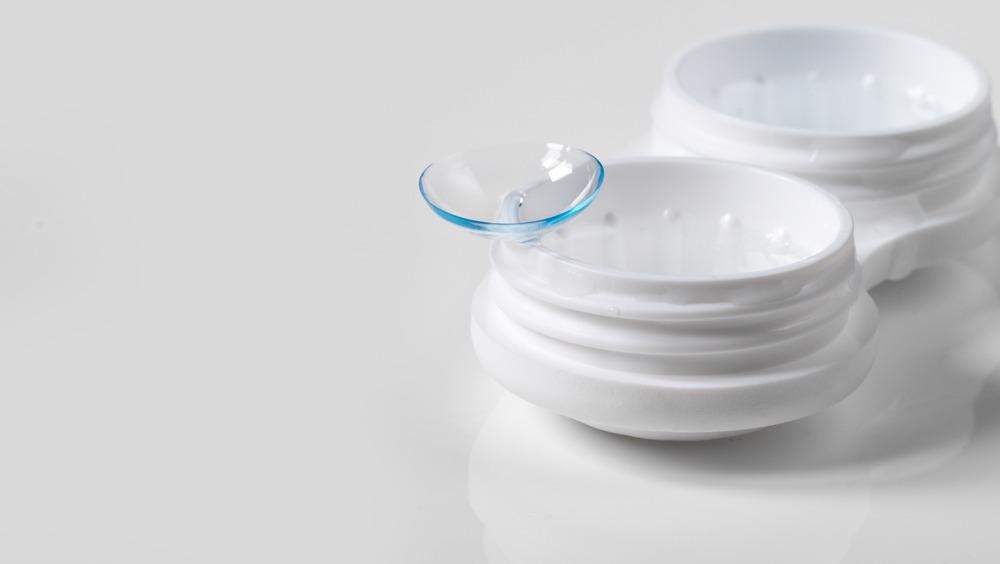As one of the most versatile materials, graphene continues to advance in several fields, from medicine and drug delivery systems to biosensors and ocular applications. This highly regarded nanomaterial has become notorious for its remarkable physicochemical properties. With novel traction in optics over recent years, this area requires an overview in the form of graphene lenses.

Image Credit: Tatiana Kochkina/Shutterstock.com
What is Graphene?
The term ‘graphene’ has become ubiquitous in nanotechnology for the advancement of research, and this is due to its outstanding properties. This nanomaterial is an allotrope of carbon and consists of a 2D hexagonal lattice structure. It was first discovered through the exfoliation of graphite crystals and has engaged researchers across the globe as a result of the associated chemical, electrical and mechanical characteristics that were found.
Reports of its highly regarded nature have been ascribed to the nanomaterial having only carbon atoms, which may enable graphene to be more effective for electromagnetic wave absorption and used for shielding electromagnetic interference. This property enables graphene to be more lightweight and feature a higher stability level than other metal materials.
Wearable Device Developments and Solving Obstacles
The development of wearable devices has progressed with research into a contact lens that can be advanced for disorders, including glaucoma or diabetes diagnoses through the measurement of intraocular pressure or glucose composition within the tears.
With the progression of technology, certain other developments, such as radiofrequency technology that utilize electromagnetic waves to supply power or signals, can cause challenges, including low-temperature burn or dehydration. This is due to continuous exposure close to the eyes; this damage can occur even with a device that generates a weak electromagnetic wave interference.
Additionally, with the advancement in wireless technology and technology, the exposure of environmental electromagnetic waves in the eyes has been increasing.
This is a concern due to the critical decline of eyes and the increase of eye-related problems; subsequently, smart contact lenses have become paramount to endure the widespread exposure of electromagnetic waves to the global population.
Smart Contact Lenses
The eyes are sensitive organs and so their protection has been the root of smart contact lens research including the development of graphene contact lenses.
Researchers of this innovative technology include Lee et al.. The team has investigated smart contact lenses for electromagnetic interference shielding as well as protection from dehydration.
This is significant as electromagnetic waves pass through normal contact lenses and can still be absorbed by the eyes. However, contact lenses that have been coated with graphene can partially absorb these waves – protecting the eyes.
Graphene-coated lenses have been shown to withhold a higher level of water than conventional contact lenses, allowing more moisture to remain in the eyes, alleviating symptoms of dehydration and dry eyes; this is due to graphene’s gas-impermeability characteristic.
Challenges
The advancement of graphene for ocular applications may revolutionize the field, with graphene potentially being developed for use in eye drops, intraocular drug delivery systems, and biosensors. However, there are still challenges for this innovative nanomaterial when approaching in vivo compatibility.
A recent study published in 2021 has undertaken a comprehensive review of the toxicity of graphene family nanomaterials within ocular applications, highlighting several in vivo and in vitro studies.
The toxicity of these nanomaterials is dependent mainly on their physiochemical properties including their surface chemistry, size, oxidation level, doses and exposure.
The manipulation of size has been a significant component of nanotechnology, with a nano-size enabling a higher cellular uptake by increasing surface area and enhancing cellular interaction. There have been several reports of toxicity associated with graphene nanomaterials dependent on nanoparticle size.
An example of this can be seen in micron-sized nanoplatelets that utilize reduced graphene oxide, which have been shown to have a high level of toxicity when at a high concentration after one hour of exposure. However, reduced graphene nanoplatelets with a size of 11 nm had illustrated genotoxicity at a very low level.
Translational Significance and Future Outlook
With approximately 71 million contact lens wearers around the globe, advancing the technology of traditional contact lenses with graphene could revolutionize the field. It would also further aid in reducing the impact electromagnetic waves have on the eyes through a protective barrier.
Ophthalmic diseases, including dry eye, are widely found in the population, with 25% of patients suffering from this symptom, with disorders such as Meibomian Gland Dysfunction (MGD) being one of the leading causes of dryness eyes (86%), innovative protective solutions are critical.
Other future advancements in this field include wearable technology that may enable diagnostic capabilities by potentially integrating an active circuit of graphene biosensors and electrodes that wirelessly monitor glucose levels within tears.
Overall, reducing both the electromagnetic waves being absorbed by the naked eye and retaining moisture and hydration within the eyes are significant stepping-stones for healthy advancements within the field of optics. The optimization of graphene-coated contact lenses would be revolutionary for both nanotechnology and maintaining the health of humans.
References and Further Reading
Borandeh, S., Alimardani, V., Abolmaali, S. and Seppälä, J., 2021. Graphene Family Nanomaterials in Ocular Applications: Physicochemical Properties and Toxicity. Chemical Research in Toxicology, 34(6), pp.1386-1402. Available at: 10.1021/acs.chemrestox.0c00340
Chemistry World. 2022. Graphene-coated contact lenses bring eye electronics a step closer. [online] Available at: https://www.chemistryworld.com/news/graphene-coated-contact-lenses-bring-eye-electronics-a-step-closer/2500504.article [Accessed 11 May 2022].
Lee, S., Jo, I., Kang, S., Jang, B., Moon, J., Park, J., Lee, S., Rho, S., Kim, Y. and Hong, B., 2017. Smart Contact Lenses with Graphene Coating for Electromagnetic Interference Shielding and Dehydration Protection. ACS Nano, 11(6), pp.5318-5324. Available at: https://doi.org/10.1021/acsnano.7b00370
Liu, Z. and Chauhan, A., 2021. Gold nanoparticles-loaded contact lenses for laser protection and meibomian gland dysfunction (MGD) dry eye treatment. Colloids and Surfaces A: Physicochemical and Engineering Aspects, p.128053. Available at: https://doi.org/10.1016/j.colsurfa.2021.128053
Disclaimer: The views expressed here are those of the author expressed in their private capacity and do not necessarily represent the views of AZoM.com Limited T/A AZoNetwork the owner and operator of this website. This disclaimer forms part of the Terms and conditions of use of this website.